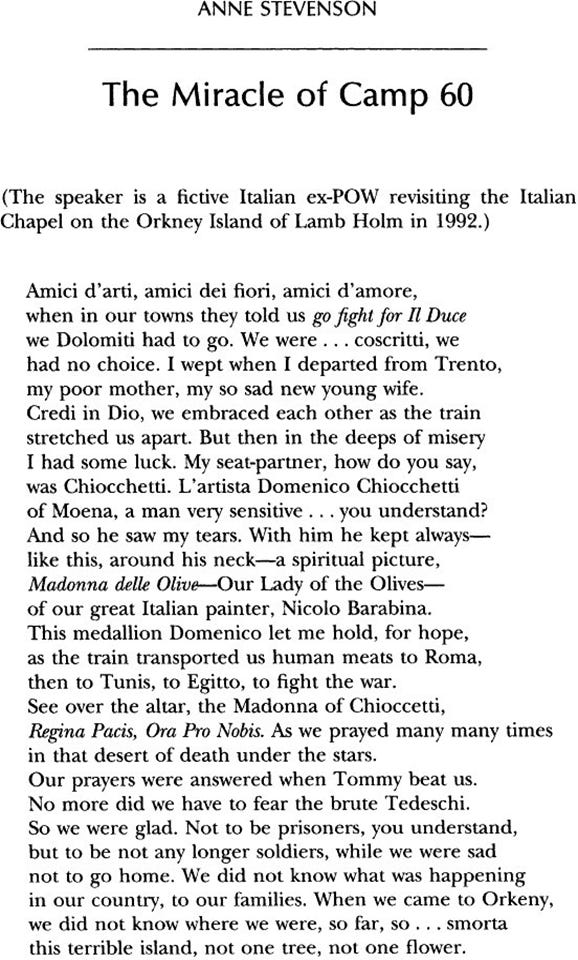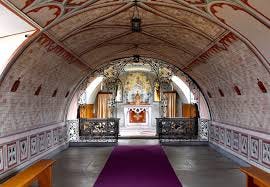This is what we might call a ‘prose poem’. Anne Stevenson is a poet of great standing whom we have already met in LL 59 The Spirit is Too Blunt an Instrument. That poem is about the miracle of birth. This prose poem is about another miracle, one of worship. I am not certain why Anne chose to write this poem in a sort of free verse, except that the story it contains lends itself well to the format. Anne blends the fictive and the real beautifully. The Italian Chapel does exist on Lamb Holm, one of the Orkney Isles off the top of Scotland.
[I apologise for the format of the poem on your screen. The poem was difficult to access on the web, and this is the best rendition I could find. It is worth the effort of scrolling down!]
To read, in your language, a prayer of blessed Francis.
‘Lord, make me an instrument of peace.
Where there is hatred, let me sow love.
Where there is injury, pardon.
Where there is darkness, light,
Where there is sadness….gioia, la gioia’.
[Note: Domenico Chiochetti died at Moena on May 7, 1999.]
I have visited this Chapel of the Italian PoWs on Lamb Holm, Orkney. I can attest it is even more beautiful than any photograph. The day was cold and dank, yet the atmosphere in the Chapel was full of grace and spirit. Beautifully preserved by the honest Scottish heritage people, the PoWs would have been proud of its status now as a landmark in a faraway place. Orkney is a major European centre of palaeolithic man (Skara Brae, the Ring of Brodgar, the tumulus of Maeshowe, and much more) for which it is less well known than for Scapa Flow, the wartime harbour for the British fleet that lies within the embrace of the Orkney Isles, ‘the azure water, islands, emeralds in the sea’.
Anne’s poem moves magically from a perspective to the new arrivals of an appalling place (only ‘polvere, calcina, cemento’, we do not need Italian to know this is ugly, cementitious waste) to one of beauty and magic. Rare flowers, the rugged yet beautiful landscapes, the men ‘weep from sadness and joy because from memory we had made in our ugly camp a dream of Italy’. This is the Miracle at Camp 60. Major Buckland, the Camp Commander, joins in the upliftment by suggesting the chapel, and offering two Nissen huts for the transformation. The unnamed speaker awards the Major the ultimate accolade: ‘under his traditional reserve beat surely the Italian heart’.
Anne Stevenson, with only a slight twist of poetic licence and a brief visit on a tour of the Orkney Isles has created something lovely, something memorable. This is what poets do.
Such that when I visit places of worship around the world, my throat clutches at the sanctity, the peace and the uplifting spirit. I remember all the holy places I have trod, and all the other souls who have trodden there. Walking into St Vitus Cathedral in Prague, wandering around Stonehenge, sitting in the College Chapel at St Andrew’s College, Grahamstown, South Africa, all of these structures - and many more - possess a sense of sacredness, a never-ending aura of love and succour. They are more than mere structures, they represent the love of God as prayed for by generation upon generation of people.
The blessing of St Francis above resonates timelessly:
‘Where there is sadness…(let me sow) gioia, la gioia - joy, joy’.








